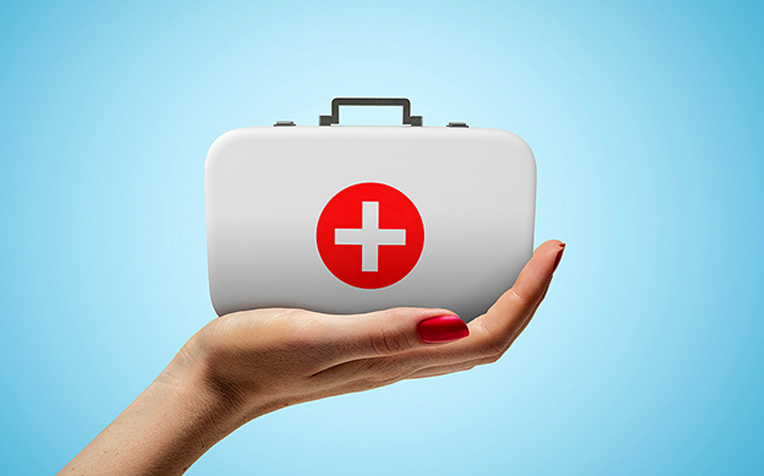
No matter how careful you are at home, there will still be times when you or a loved one will experience common injuries like cuts, burns and sprains.
In such instances, Nurse Clinician Wong Vern Tym from
Outram Community Hospital (OCH), under
SingHealth Community Hospitals, a member of the
SingHealth group, advises to stay composed and follow these basic tips before going to see a doctor.
Read more:
COVID-19 vaccine - What are the facts and what are myths
1. Scalds / Burns
What to do
When to see a doctor
Visit a doctor
immediately after application of first aid, if the:
- Scalded area is on hand, face / head, genitals.
- Scalded area has brown / black / white patches.
- Injured person experiences an electrical or chemical burn.
- Injured person experiences breathing issues.
- Injured person does not experience pain in the injured area.
- Injured person has an underlying medical condition (example: diabetes).
2. Cuts
What to do
- Wash the injured area with soap and water to remove any debris (if possible).
- Dab dry with clean cloth. Avoid using fibrous items such as tissue, which may stick on the injury and worsen it.
- Cover injured area with a clean cloth and apply pressure for about 5 minutes.
- Check the injured area. Proceed with second application of pressure for another 5 minutes if bleeding still occurs.
- You can apply an antiseptic ointment before covering the cut with a band-aid or non-stick dressing.
When to see a doctor
Visit a doctor
immediately after application of first aid, if the:
- Bleeding continues after second application of pressure.
- It was over 5 years ago that the person with the cut had a Tetanus injection.
- Bones / muscles / tendons / fat can be seen from the cut. This indicates a deep cut that may require suturing.
- Redness surrounding the injured area does not subside, or appears to be worsening.
- The injured person develops a fever (infection may have occurred).
- The injured person experiences numbness in the injured area (infection may have set in, or a nerve may have been injured).
- The injured person has an underlying medical condition (example: diabetes).
Read more:
When you should go to the A&E (and when not to)
3. Sprains
What to do
- Rest / immobilise the sprained area to prevent it from worsening.
- Place ice on the sprained area for not more than 20 minutes. It can be done every three hours to relief some swelling and pain.
- Bandage the sprained area to keep it immobilised and supported. Do not wrap too tightly as this constricting effect may impede blood circulation.
- Raise the sprained area when possible as it will help in blood circulation and reduce swelling. For example, place a pillow to support ankle / leg when sleeping or elevate legs on another chair when sitting down.
When to see a doctor
Visit a doctor
immediately after application of first aid if the:
- Injured person develops a fever.
- Redness surrounding the injured area is not subsiding or getting worse.
- Sprained area is cool to the touch, even when no ice pack has not been applied or between ice pack applications.
- Injured person experiences numbness or sharp pain on the sprained area.
- Pain / swelling does not get better or has increased.
- Injured person is unable to exert pressure on the injured area (example: cannot stand or walk).
Have a first aid box at home
“It's always good to have a basic first aid box at home as it can help prevent an injury from getting worse. But be sure to check the items on a monthly basis for expiry," advises Nurse Clinician Wong Vern Tym from Outram Community Hospital (OCH).
Read more:
Home emergency kit - Items every home should have
Watch this video on how to treat burns, cuts and sprains
--
Articles on
HealthXchange.sg are meant for informational purposes only and cannot replace professional surgical, medical or health advice, examination, diagnosis or treatment. Photo courtesy of iStock.